For women, there is nothing that is embarrassing like a bra that rides up. A bra that rides up in the front or back does not only make one uncomfortable but also unflattering. If you have a bra that causes comfort and style issues, continue reading this article to know how to address such problems.
Why Does My Bra Ride Up in the Front?
Bras are a type of cloth for women designed to support the chest. Despite their intention to make women’s lives easier, they frequently slip, twist, or ride up, causing discomfort. For one to appropriately solve such a problem, the cause must be determined. Therefore, below are the reasons why your bra rides up.
Wrong size bra
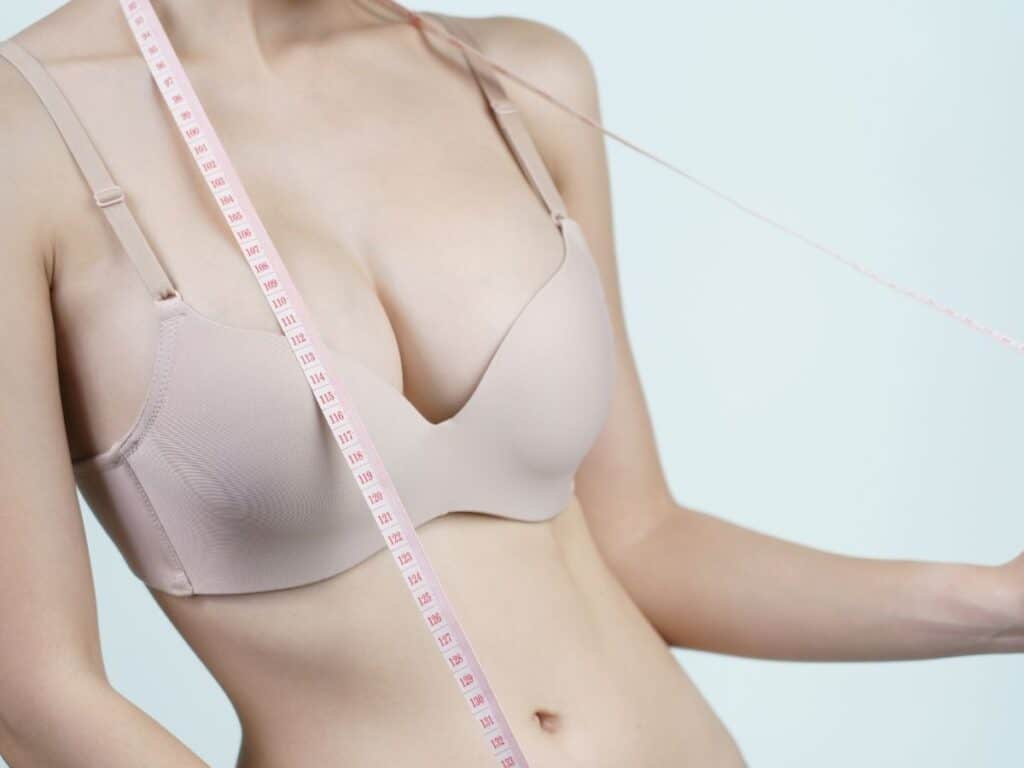
About 80% of women could be wearing the incorrect bra size, the leading cause of bra-related problems. Improper measurements, weight loss or gain, natural breast development, or a refusal to rise in size due to embarrassment are all reasons for an ill-fitting bra. If you want to reduce the possibilities of a bra riding up, consult an expert at a local store about suitable measurements.
Sweating
Accumulation of sweat under the chest can cause the bra to ride up since they are made of a thick material and are tight around the band. There are numerous ways to reduce sweat production. You can wipe it away more frequently if it isn’t too much. Second, to prevent sweating, consider putting antiperspirant under the breasts. Finally, if this is a serious problem, a doctor can recommend medical treatment to reduce sweating.
Sports Bra
A standard bra may not be robust enough for ladies who have an active lifestyle, resulting in uncomfortable twisting and riding up. A sports bra might be a better choice in such a scenario. A sports bra’s purpose is to compress the chest, reducing movement while jogging or doing sports. Since there is less mobility, the bra is less likely to ride up above the breasts.
Incorrect Bra Style
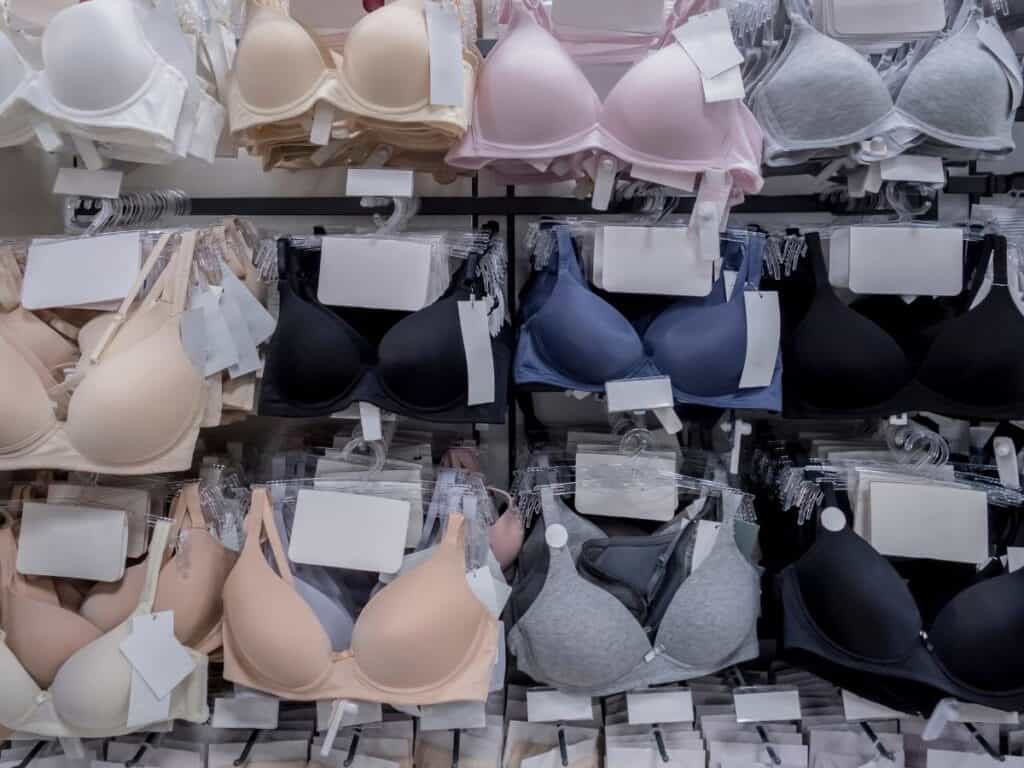
Strapless, halter, normal, one-strap and more styles of bras are available. These styles are designed to fit a variety of shirt styles while ensuring that straps are hidden beneath garments. Because they lack the shoulder support of other types, bras with smaller straps (such as spaghetti straps or strapless styles) are more likely to ride up. To reduce bra movement, switch to a thicker strap if possible.
Here is what to do if your bra straps keep falling off your shoulders.
Why does my bra ride up at the Back?
It’s an all-too-common issue that most women have dealt with before. It can be inconvenient when your bra band begins to rub against your Back. This will most likely make you feel uneasy and irritated. Needless to say, you must take action as soon as possible to address this issue. Fortunately, it’s a simple problem to address. Here are some of the solutions:
1. Adjust your bra straps
To begin with, you should adjust your bra straps. If you pull it excessively tight, you will notice that the cloth is raised on your Back. Not only will the straps dig into your arms and shoulders, but the bra will also not provide enough support for your breasts. Adjust the straps by lengthening or shortening them. Then check to see if it affects how the bra fits.
2. Check your cup size is right
It’s possible that you’re wearing the wrong bra size. It should not come as a surprise that one of the reasons why your bra band is riding up is because of this. Your bra may have problems if your cups are too small or too big. That is a real issue that occurs more frequently than you might imagine. You may need to get fitted again to figure out what’s wrong.
3. Incorrect band size
Alternatively, the issue could be due to incorrect band size. Surprisingly, if your band size is too big or too small, your bra has a high chance of riding up at the Back. The material will naturally start to slide up your Back if you’re wearing a larger band size than you require. The same will apply if it is too small because your bra’s straps will be too tight and force it to move. In any case, it is important to realize the problem and do the necessary to correct it.
4. Get a different style
Have you thought of the possibility that this bra isn’t right for you? This may be the case! Breasts are of different shapes and sizes, and that is undeniably correct. As a result, some styles will fit certain breast shapes better than others. If you’ve tried all of the above and nothing seems to be working, you might want to consider trying a new type of lingerie instead. Give it a shot.
5. Take a look at the material
Have you had a bra for a long time? If you don’t recall purchasing it, it’s most likely old and worn out. This problem is beyond your control, no matter how much attention you give to your lingerie. Examine the fabric closely to check if it’s frayed or pulled. The bra band may have stretched out, causing your bra to ride up at the Back.
Throw the bra out altogether
It may be a lost cause if you discover that it simply does not fit you no matter how long you try to adjust the bra. It’s possible that the bra should be thrown out or recycled. Wearing a bra that rides up at the Back is uncomfortable, but it also doesn’t help you look your best. You won’t feel secure or confident since you’re not giving your boobs the support they require. Forever, say goodbye to that dreadful bra.
How to Stop a Bra from Riding Up
A bra riding up at the Back makes one uncomfortable and can result in ugly back bulges. Bras that ride up in the front might be a problem for persons with flat chests or who have undergone mastectomies on one or both sides. If you bra keeps on riding up, its now time to consider some changes. Investing in a well-fitting bra is the greatest way to avoid ride-up. If you’re not willing to dispose of an otherwise comfortable bra, try tightening the band or making minor adjustments to your bra.
Method 1: Getting a Well-Fitting Bra
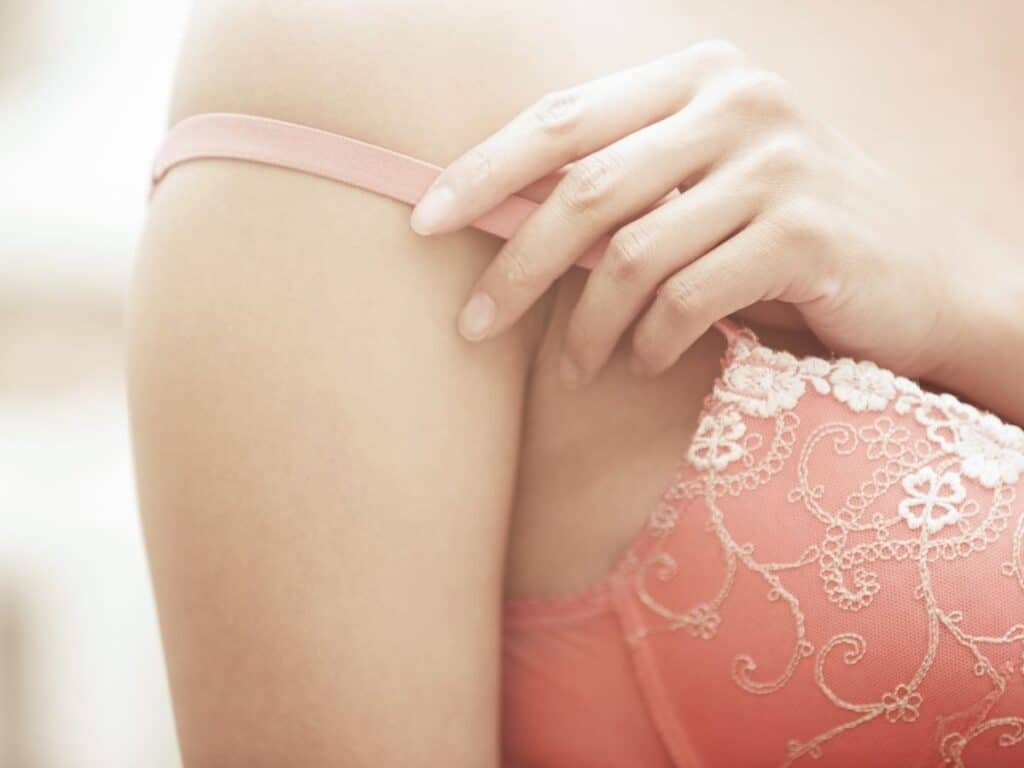
1. Have a professional fitting
Having your measurements taken by a professional is the best method to have a good fit. A fitting is usually free at any lingerie store. A good bra fitting will only take about 15 minutes due to a little trial and error. Inform the fitter that you want a bra that will not ride up in the Back.
2. Measure your band size
One of the main causes of ride-up is a huge band. Invest in a bra with a tight band to avoid ride-up. Have your band size measured by a professional, or do it yourself by putting a measuring tape securely over your rib cage immediately below your breasts. Once you know your measurement in centimeters or inches, check for your size on a band size chart.
It’s worth noting that band sizes differ by country or location. A size 28 in the United States, for example, is a size 60 in most European countries.
If you find that your size is an odd number after measurement, let’s say 41, try bra sizes on both sides of it (e.g., bras with bands sized 40 and 42).
3. Measure your cup size
If your cups are too tiny, the increased strain on the cups may force even a well-fitting band upward. Wrap a measuring tape over your chest at nipple height. Ensure it is loose enough that it does not compress your breasts and measure your bust size. Get the difference between your band size from your breast size, and then check your cup size on a size chart.
For example, if the difference between your bust and band size is 7.6 cm (3 inches) in US measurements, your cup size should be a C. A 10cm (4 inch) difference is a D, and son on.
4. Try out a few bras until you find the right fit
Even if you find bras of the same measurements, not all are designed equal. Try on a couple of different bras in your size until you discover one that fits well and doesn’t ride up in the Back. The band should be snug, ride low on your Back, and keep a straight line with the floor rather than bending upwards.
A well-fitting band may feel a little snug at first if you’re used to wearing an enormous bra. It should not be so tight that it causes pain or discomfort either. You should be able to pass your fist under the band at the rear with just enough give.
5. Replace your old bras
Bras stretch out with time due to frequent use and washing. It is time to change your bra if it starts to ride up, even in the tightest setting. Most high-quality bras can be worn about 100 times before they start to lose their shape.
Give your bra a break between uses to extend its life. Wearing the same bra two days in a row is not a good idea.
Method 2: Making Adjustments
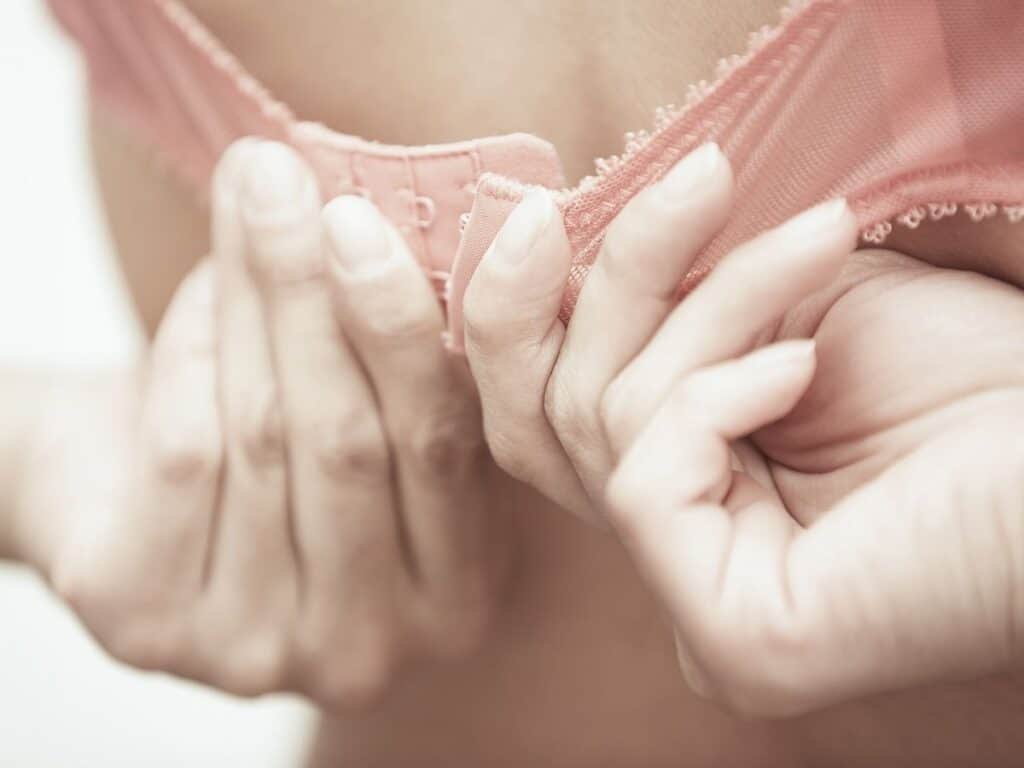
1. Tighten the band
If your bra band is the right size but still rides up, the tension may need to be adjusted. Most back-fastening bra bands are resizable, with 2-4 rows of hooks letting you change the band’s tightness. Bring your band in until you find one that works for you.
2. Loosen your straps
Not at all times, the band is the issue; sometimes, it’s the straps. Too-tight straps might pull the band upwards, making your bra ride up. Loosen your straps if your band fits snugly but still rides up. Don’t let them slip off your shoulders by loosening them too much.
3. Keep your band in place with garters
Some women have a difficult time keeping their bras from riding up. For example, if you’ve had a mastectomy, keeping your band in place may be quite challenging, even if you have a specially made bra that fits perfectly. Clip the band to the top of your jeans or underwear with “bra suspenders.” You can as well make your suspenders by adding suspender clips at each end of a 3-inch (7.6 cm) elastic band or use long sock garters.
I also have a guide on how to stop tube tops from falling down that may interest you.
Bottom line
The above methods should relieve you this stress although they may not apply all to you. Therefore, choose the one that works for you depending on type of bra you are wearing.
I have also created a comprehensive guide on stopping all your clothes from riding up that may interest you to read next.
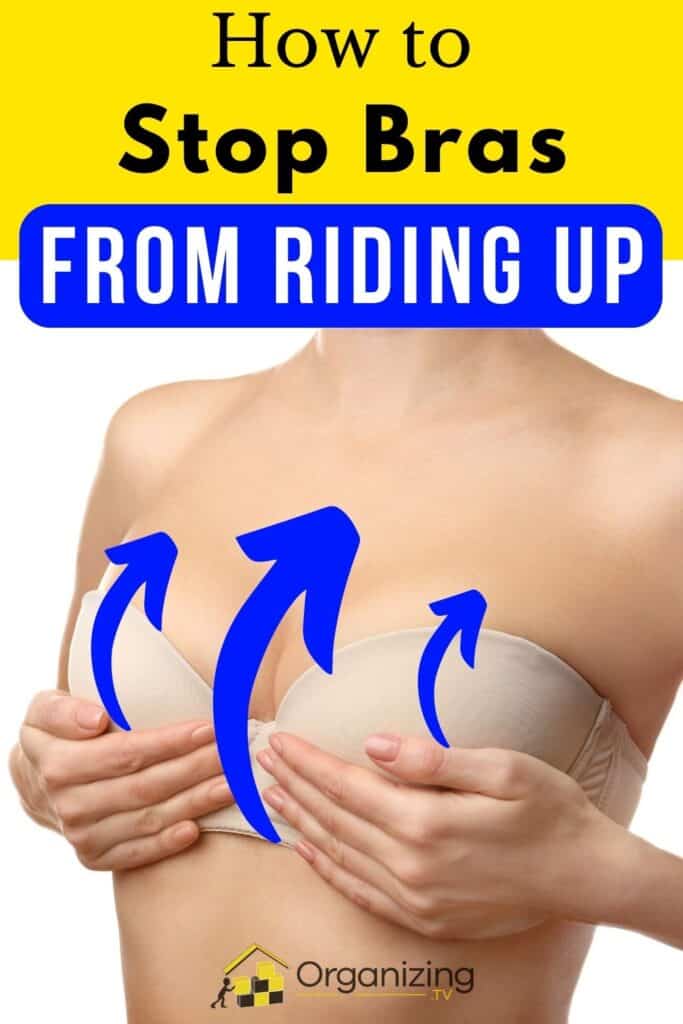

I’m an expert wardrobe organizer and a bit of a clean freak. I created this website and its YouTube channel to share practical guides about laundry and organizing. My teachings have been featured in multiple large news publications, and I’ve self-published two wardrobe organizing books and an entire course on the subject.
